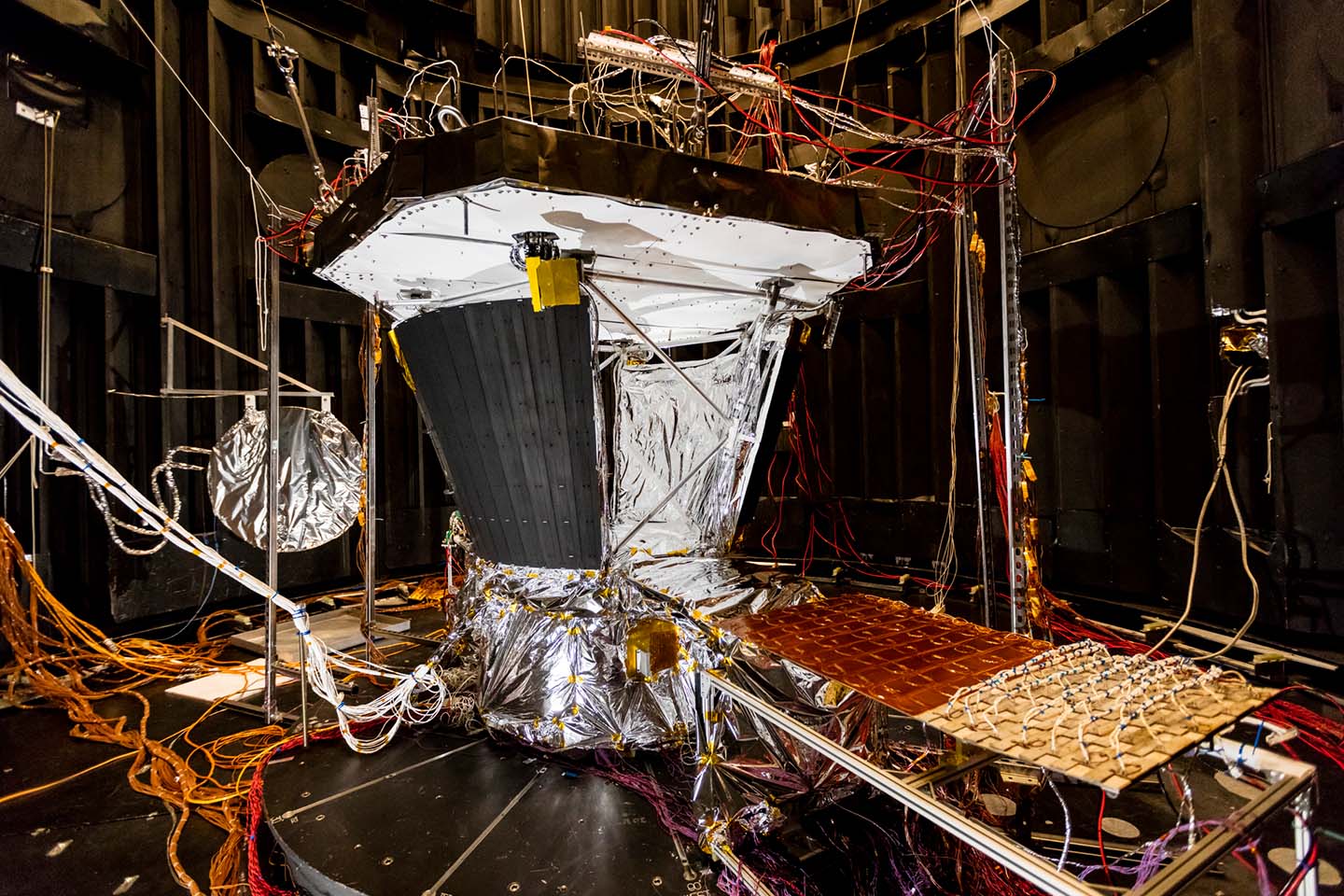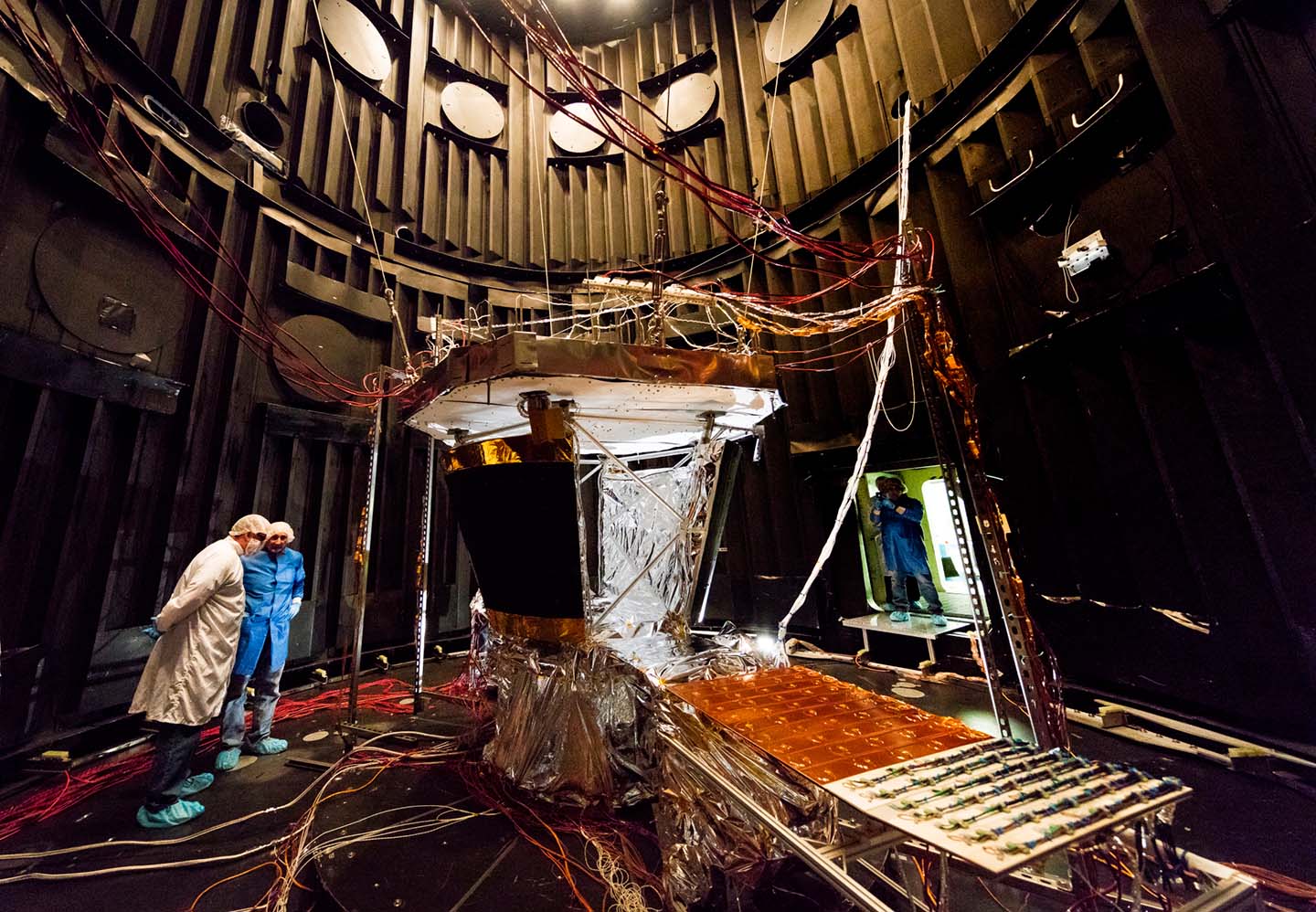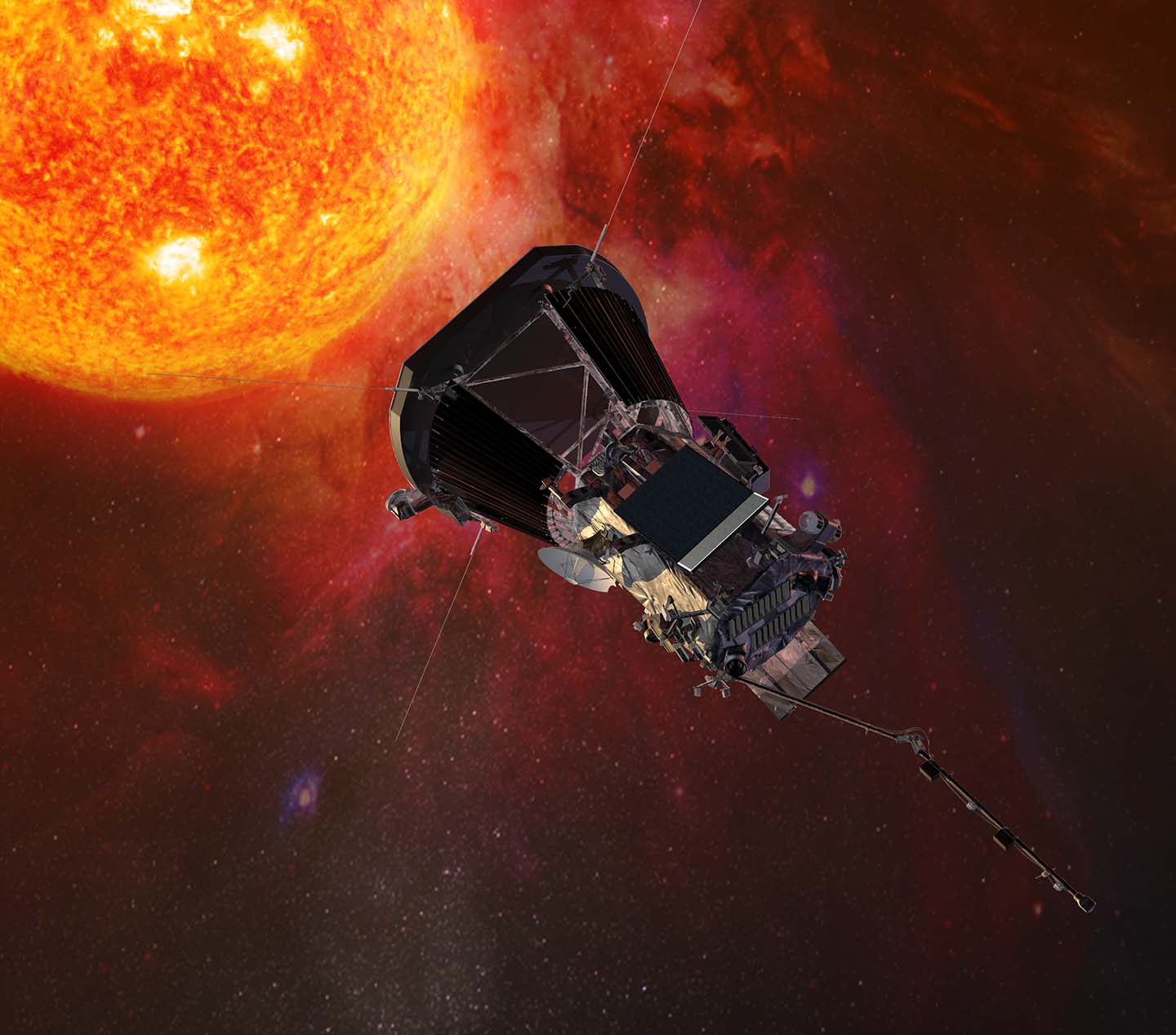From Ice to Fire: Launch Challenges
While the extraordinary heat of the sun will be the spacecraft’s most intense challenge, the minutes immediately following launch are actually one of the spacecraft’s most critical early performance sequences.
When Parker Solar Probe launches on board a ULA Delta IV Heavy rocket from Cape Canaveral Air Force Station, Florida, in summer 2018, the cooling system will undergo wide temperature swings. “There’s a lot to do to make sure the water doesn’t freeze,” said Lockwood.
First, temperatures of the solar arrays and cooling system radiators will drop from that in the fairing (about 60°F, or 15°C) to temperatures ranging from −85°F to −220°F (−65°C to −140°C) before they can be warmed by the sun. The pre-heated coolant tank will keep the water from freezing; the specially designed radiators — designed to reject heat and intense temperatures at the sun — will also survive this bitter cold, thanks to a new bonding process and design innovations.
Less than 60 minutes later, the spacecraft will separate from the launch vehicle and begin the post-separation sequence. It will rotate itself to point at the sun; the solar arrays will release from their launch locks; the arrays will rotate to point to the sun; a latch valve will open to release the warm water into two of the four radiators and the solar arrays; the pump will turn on; the spacecraft will rotate back to a nominal pointing orientation, warming up the two coldest and unactivated radiators; and power from the cooled solar arrays will begin recharging the battery.
In another first, this complex and critical series of tasks will be completed autonomously by the spacecraft, without any input from mission control.
The water for the two unactivated radiators will remain in the storage tank for the first 40 days of flight; after that, the final two radiators will be activated.
“One of the biggest challenges in testing this is those transitions from very cold to very hot in a short period of time,” Lockwood said. “But those tests, and other tests to show how the system works when under a fully heated TPS, correlated quite well to our models.”
Thanks to testing and modeling, the team studied data and increased the thermal blanketing on the first two radiators to be activated, in order to balance maximizing their capacity at the end of the mission, and further reduce the risk of water freezing early in the mission.
Keeping Cool, Autonomously
When Parker Solar Probe is hurtling past the sun at some 450,000 miles an hour (724,000 KPH), it will be 90 million miles from mission controllers on Earth — too far for the team to “drive” the spacecraft. This means that adjustments to how the spacecraft is protecting itself with the TPS need to be handled by Parker Solar Probe’s onboard guidance and control systems. These systems use new and effective autonomous software to allow the spacecraft to instantly alter its pointing to maximize protection from the sun. This autonomous capability is critical to the operation of the spacecraft’s solar arrays, which must be constantly adjusted for optimal angle as Parker Solar Probe hurdles through the sun’s harsh, superheated corona.
“During solar encounters, very small changes in the wing angle of the solar array can vastly change cooling capacity needed.” Lockwood said that a one degree change in the array angle of one wing would require 35 percent more cooling capacity.
The constant challenge is to make sure the spacecraft and the arrays are staying cool.
“There’s no way to make these adjustments from the ground, which means it has to guide itself,” Lockwood said. “APL developed a variety of systems — including wing angle control, guidance and control, electrical power system, avionics, fault management, autonomy and flight software — that are critical parts working with the solar array cooling system.”
Added Lockwood: “This spacecraft probably is one of the most autonomous systems ever flown.”
That autonomy, along with the new cooling system and pioneering solar array upgrades, will be crucial to ensuring that Parker Solar Probe can perform the never-before-possible science investigations at the sun that will answer questions scientists have had about our star and its corona. Learn more about those questions at http://solarprobe.jhuapl.edu/The-Mission/index.php#Science-Objectives.


